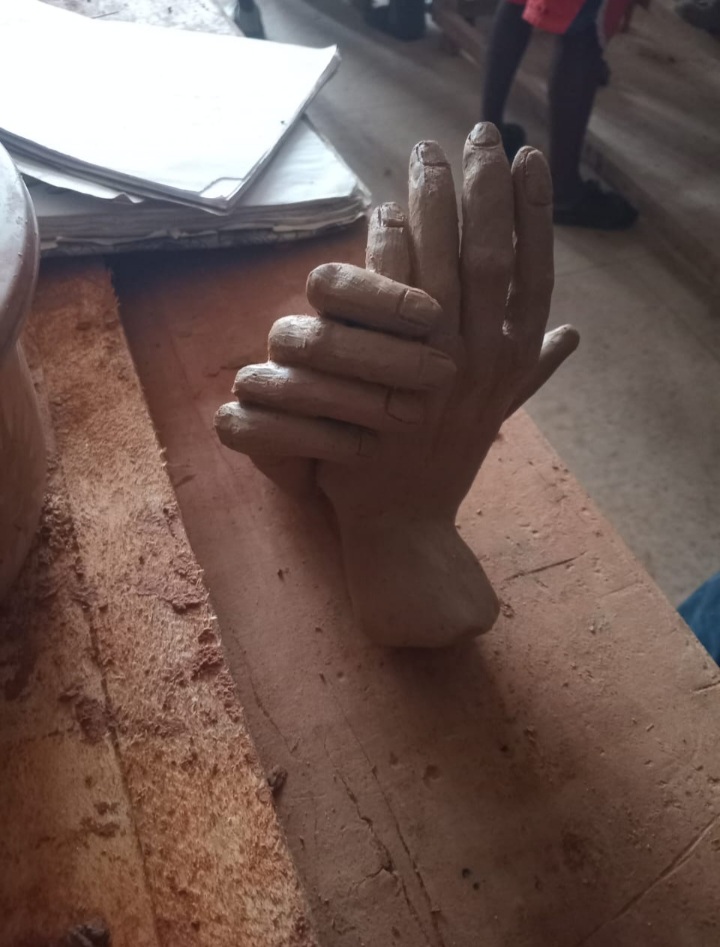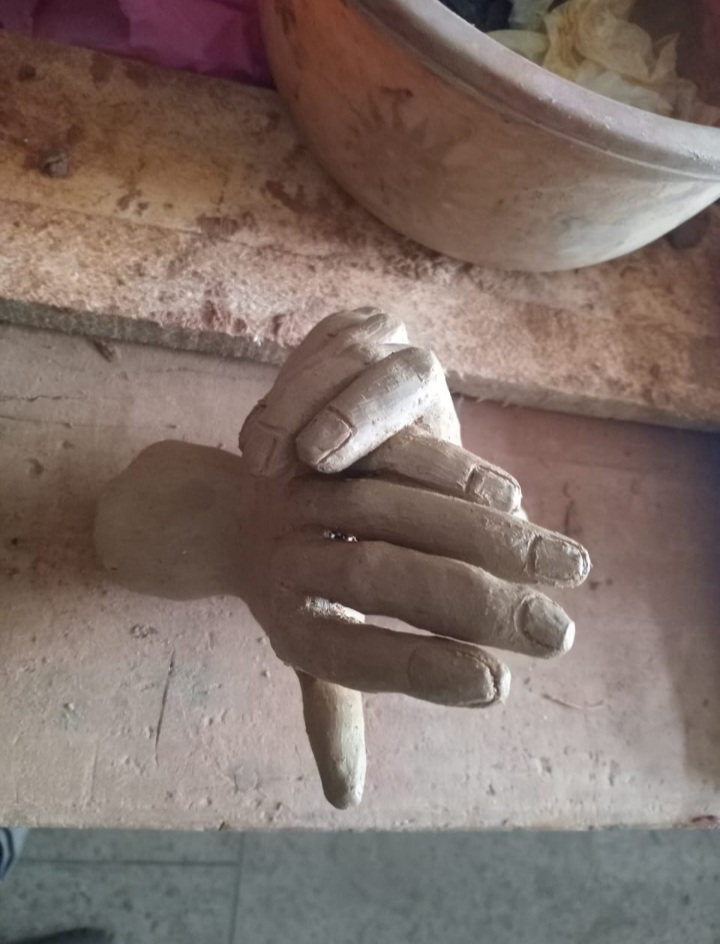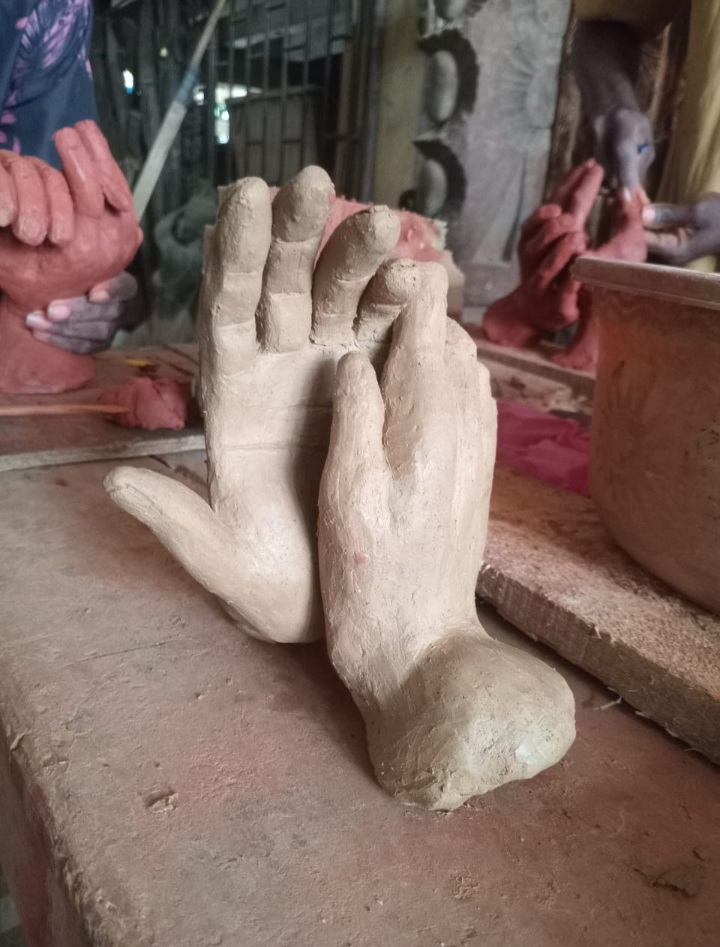MY SCULPTED HAND
When my lecturer walked into the studio and told us that today’s task was to sculpt our own hands, the whole class went silent. At first, it sounded simple—after all, we see our hands every single day. But the moment the clay was in front of us, we all quickly realized just how difficult it is to capture every curve, fold, and proportion of something so familiar.
The studio was filled with nervous energy. Some of us struggled to shape the fingers without making them look stiff, while others found it almost impossible to carve out the delicate details like knuckles, nails, and the subtle veins that give the hand its realism. A few of us even made sculptures that looked more like claws than hands. I remember laughing with my classmates at our own frustrations, but deep down, I was determined to get it right.
Then came the hardest part—the lecturer walking around, carefully studying our work. There was a sharp sound when he suddenly smashed a few of the sculptures and told those students to start all over again. For a moment, you could feel the air grow heavy with discouragement. Some students sighed in frustration; others froze, afraid that theirs would be next. But as harsh as it felt, I understood what he was trying to teach us: that true art doesn’t come from half-effort. It comes from patience, discipline, and the willingness to start again when things aren’t right.

For me, sculpture has never been just another subject. I’ve always loved the challenge of taking something shapeless and breathing life into it with my hands. Clay responds to touch—it records every movement, every hesitation, every burst of confidence. And in those struggles, I feel connected to great sculptors of the past who also fought with form and detail before achieving perfection.

One sculptor who inspires me deeply is Michelangelo, especially his famous David. When I look at that masterpiece, I see more than just a statue of a man—I see the hours, the frustration, the discarded attempts, and the relentless pursuit of perfection. Michelangelo once said that he saw the angel in the marble and carved until he set him free. That quote reminds me that as sculptors, we must see beyond the surface of clay or stone and bring out what lies hidden within.

Yes, I struggled to sculpt my hand in class that day. Yes, my work wasn’t perfect, and I had to redo parts again and again. But instead of giving up, I felt more motivated than ever. Every failure is just another step toward mastery. I know that with constant practice, I will get better. And one day, I want my sculptures to inspire others the same way the great masters inspire me.
Sculpture is not easy—it requires patience, observation, and resilience. But that’s exactly why I love it. And no matter how many times I have to start over, I’ll keep practicing until I become the best sculptor I can be.